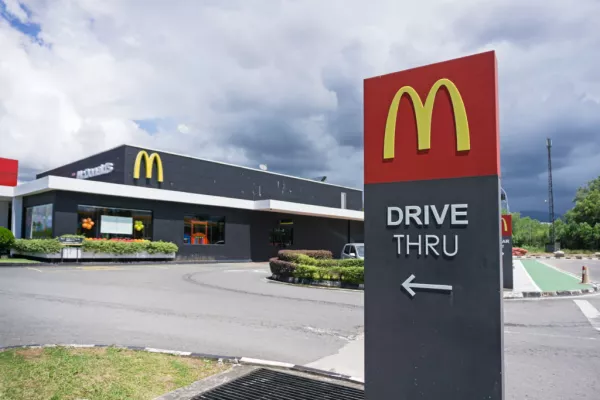Have restaurant-goers had their fill?
Taco Bell and KFC parent Yum! Brands, America's largest publicly traded restaurant chain, raised operating profit forecasts when it reported second-quarter earnings late Wednesday, prompting shares to rise as much as 5.7 per cent Thursday.
A global consumer company raising guidance is a big deal at a time when economic uncertainty has pressured sales and earnings across the sector. But investors may be overlooking some troubling trends. Yum's total revenue fell short of Wall Street estimates. And sales growth at its established locations is slowing -- particularly at Taco Bell, whose stores are almost exclusively in the U.S., and where sales growth has been stalled or slowing since the end of 2014:
That could be a worrisome sign for the greater U.S. economy. Restaurants are the ultimate consumer discretionary purchase and can be a leading economic indicator, according to Bloomberg Intelligence economist Richard Yamarone.
Spending at restaurants and bars overtook grocery store purchases for the first time ever in March 2015, according to the U.S. Commerce Department. Falling gas prices and slightly rising wages had helped make it easier to pay somebody else do the cooking.
That broad trend has continued in the past six months, but a closer look suggests the outsize sales growth restaurants have enjoyed may be dwindling.
Last year, a few quarters of positive sales at restaurants such as Taco Bell and McDonald's -- as well as the successful launch of all-day breakfast offerings at many chains -- made it seem like fast food was back in fashion. Casual dining establishments such as Chili's struggled to attract diners, while the runaway growth at fast casual restaurants such as Chipotle and Potbelly had stalled. But the 1 percent year-over-year drop in the latest quarter in sales at established Taco Bell locations suggests growth at fast food chains could be slowing, too.
Escalating price wars have contributed to lower overall sales numbers. From Burger King's 15-cent chicken nuggets to McDonald's two items for $5, it's getting hard to keep track of all the promotions. But they aren't helping grow sales or traffic enough to make a difference in total sales. And the longer the discounts last, the harder it will be for chains to wean customers off of them in the long run.
Across the industry, same-store sales growth has decreased for the past three months, according to MillerPulse data. Traffic, meanwhile, has declined every month for more than a year, according to data from Knapp Track.
On Thursday, Yum Brands CEO Greg Creed said that despite a recent "malaise in the US," he was "positive" and "encouraged" about the company's U.S. business going forward.
But judging by industry job growth and number of hours worked, restaurant chains don't seem too bullish on the future.
In the past seven months, the year-over-year increase in the average number of weekly hours worked by U.S. restaurant employees increased just once, according to the Bureau of Labor Statistics. Employment growth, which had mostly tracked retail sales over the past decade, has been flat over the past two years. A further slowdown in hiring growth more recently doesn't bode well for the economy -- or for the restaurant industry's outlook.
An upbeat tone from Yum and other restaurants might sound good to investors, but signs point to a spending pullback that could take an even bigger bite out of restaurant sales.
News by Bloomberg, edited by Hospitality Ireland









